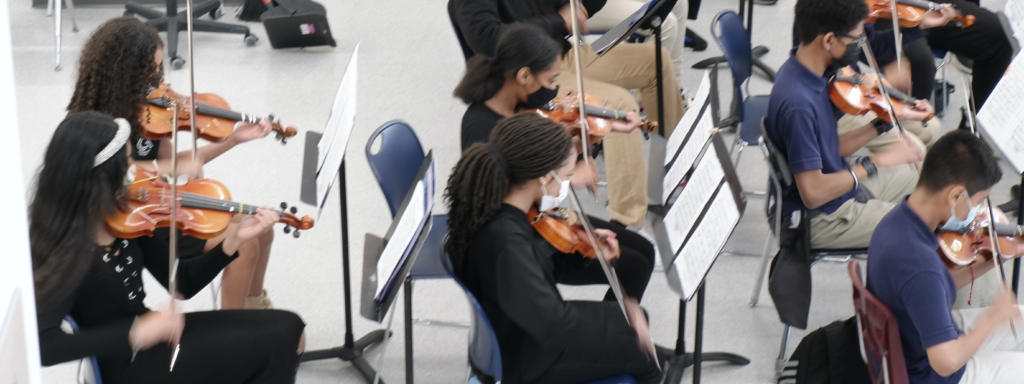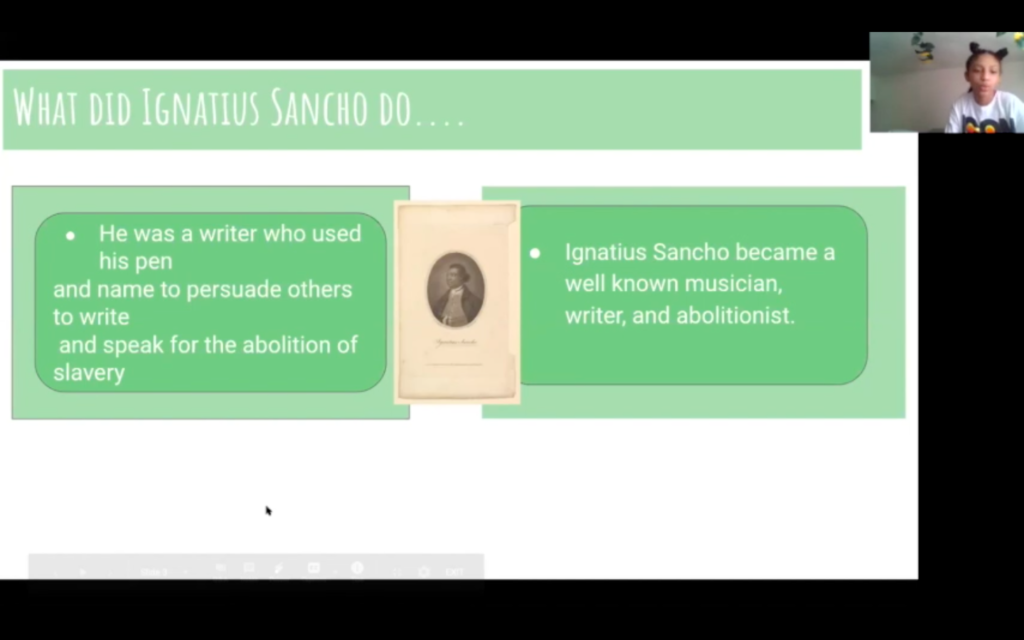
How do Conservatory Lab’s young musicians learn to make music “sing?”
If you have ever picked up a recorder or plunked on a piano, you know that there is more to making music than knowing where to put your fingers and make notes. Those building block skills like reading music and using proper bowing techniques are important, but they are not what makes an audience stop and catch their breath when a virtuoso plays, nor what motivates a young musician to tocar y luchar, to play and strive to make beautiful music.
Resident Artists at Conservatory Lab use a variety of strategies to give students a real voice in their own music, even when they are just learning to read notes. Working with Resident Artist Judson Dietrich who teaches Violin and Viola, students in Grades 3-8 at the Upper School concentrate on developing technique, musicianship, and artistry by looking into the context behind music they were learning.
Students in grades 3 and 4 focused on Lightly Row, a folksong from around 1850. It has multiple sets of lyrics, one of which is thought to describe the Mississippi River.







Dietrich’s goal was to help the student’s make the music they played sound like a river. To do this, students did research about the Mississippi River and created beautiful illustrations of what it would be like to float from Minnesota to the Gulf of Mexico. Working from home, students used whiteboards, digital drawings, and notebook paper as well as more typical art materials.

Students in Dietrich’s Upper Strings section from Grade 5 all the way up to Grade 8 focused on “Les Contes des Fées” by Charles Ignatius Sancho. They researched the composer and have shared what they learned in the video below.
Students in Dietrich’s Upper Strings section from Grade 5 all the way up to Grade 8 focused on “Les Contes des Fées” by Charles Ignatius Sancho. They researched the composer and have shared what they learned in the video below.
Ignatius Sancho was born on a slave ship off the coast of Guinea. He was sold into slavery in Nuevo Granada, which is where Colombia and Panama are today. At two, he was orphaned and uprooted to live with three sisters in Greenwich, England. While enslaved there, he was frequently visited by the Duke of Montagu who taught him how to read and write. Eventually, he ran away from the sisters and was taken in by the Duke and Duchess of Montagu where he worked as their butler. Upon the death of the Duchess, Sancho was freed, decided to start his own business. Famously, he was the first Black man to vote in 1774. In 1768, Thomas Gainsborough painted his portrait.
In the classroom, Dietrich focuses on Sancho’s prolific writing style. He penned essays, plays, and a collection of music that reflect his personal story of moving from being enslaved to gaining freedom and recognition as well as his passion for abolitionism.
To make the music sing, our students were asked to take it a step further. During their research about Sancho, they were inspired to create fairy tales. During our Winter Celebration of Learning, one student explained, “We wanted to make a connection to the way Ignatius Sancho used music to tell a story.”
Depending on interest, students were allowed to work individually or in small groups to create contemporary fairy stories. Some writings were inspired by movie stars, or video games, one student even created a fairy tale about memes. Many students across grades worked on this piece, which showcased the way they develop technical and artistic skills. As you can hear from the background in the video, younger students are learning to bring the piece up to the recommended tempo, while older students in grades 7 & 8 got creative. One student even modulated their speed in addition to mixing beats for their “Contes des Fées” recording.
Check out the Upper Strings Padlets from the celebration of learning in grades 3, 4, 5, 6, 7 & 8 to see students videos and artworks.
